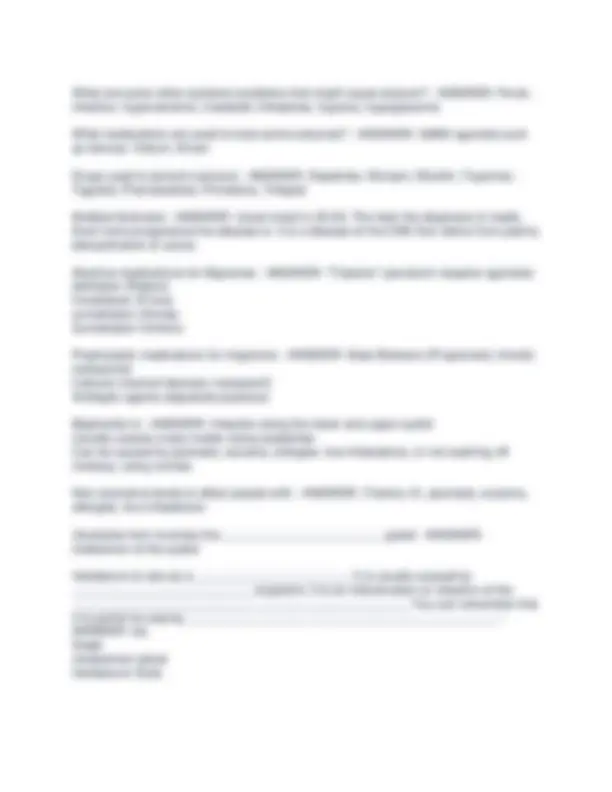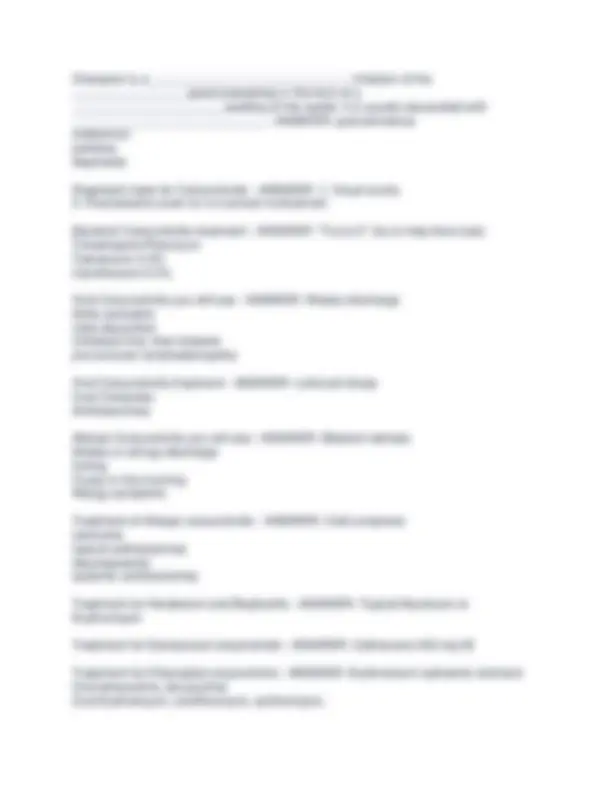





Study with the several resources on Docsity

Earn points by helping other students or get them with a premium plan


Prepare for your exams
Study with the several resources on Docsity

Earn points to download
Earn points by helping other students or get them with a premium plan
Community
Ask the community for help and clear up your study doubts
Discover the best universities in your country according to Docsity users
Free resources
Download our free guides on studying techniques, anxiety management strategies, and thesis advice from Docsity tutors
A comprehensive set of questions and answers covering key concepts related to neurological disorders and eye conditions, relevant to nurs 620 curriculum. It includes topics such as headaches, dizziness, vertigo, paresthesia, seizures, multiple sclerosis, and various eye conditions like blepharitis, hordeolum, chalazion, and conjunctivitis. The document offers a valuable resource for students preparing for their nurs 620 exam, providing insights into common diagnoses, treatments, and associated symptoms.
Typology: Exams
1 / 6

This page cannot be seen from the preview
Don't miss anything!




Four types of headaches - ANSWER- Traction (tension), Vascular (migraine), cluster, mixed (vascular and tension), Inflammatory How do you treat migraines? - ANSWER- 1. Avoid triggers
Peripheral Vestibular Disease is - ANSWER- There is a problem located in the labyrinth of the middle ear. Signs and symptoms include dizziness, N/V, diaphoresis, trouble balancing, vertigo, tinnitus, pressure in the ear, intermittent hearing loss, diplopia. Medications prescribed for vertigo? - ANSWER- Meclizine Phenergan. Take these medications for a week, then taper slowly. Diamox can also be used to decrease edema in the labyrinth. Antiemetics (Compazine and Tigan) If the patient has systemic disorders, the following symptoms will occur - ANSWER- Lightheadedness, pallor, dyspnea, tachycardia, bounding pulse, weakness,hypotension, blurred vision, headache, diaphoresis. PARESIS IS - ANSWER- WEAKNESS Paresthesia is - ANSWER- numbness/tingling, cramping, pain without stimulus that is felt along the nerve pathway The most common diagnosis associated with paresthesia is - ANSWER- araterial occlusion, arteriosclerosis, nerve entrapment, neuropathy, TIA, Herpes Zoster Arterial occlusion is a medical emergency and usually requires intervention within - ANSWER- 4 - 6 hours Nerve entrapment usually is caused by - ANSWER- Edema, RA, infection, prolonged standing or sitting, tight clothing Neuropathy is usually caused by - ANSWER- MS, DM neuropathy, collagen disease, renal failure, thyroid disease, toxins, nutritional deficiency Simple partial seizure is explained as - ANSWER- No loss of consciousness, and usually unilateral hemisphere Complex partial seizure is explained as - ANSWER- Consciousness is impaired, usually bilateral hemisphere Absense seizure - ANSWER- Sudden onset of interruption of activities, such as a sudden blank stare, brief rotation of the eyes upward, stop eating while food is on the way to the mouth. Usually lasts a few seconds to 30 seconds. Tonic-clonic seizure - ANSWER- Most frequent generalized seizure. Patient falls to the ground in a tonic state. Rigidity with respiratory inhiition, cyanosis, may bite their tongue or become incontinent with confustion or combativeness after Myclonic jerks - ANSWER- Brief shock-like contractions, to the face, trunk, or extremities. Mostly during sleep
Chalazion is a ______________________________ infection of the _________________ gland presenting in the form of a _______________________swelling of the eyelid. It is usually associated with _____________________________ - ANSWER- granulomatous meibomian painless blepharitis Diagnostic tests for Conjunctivitis - ANSWER- 1. Visual acuity